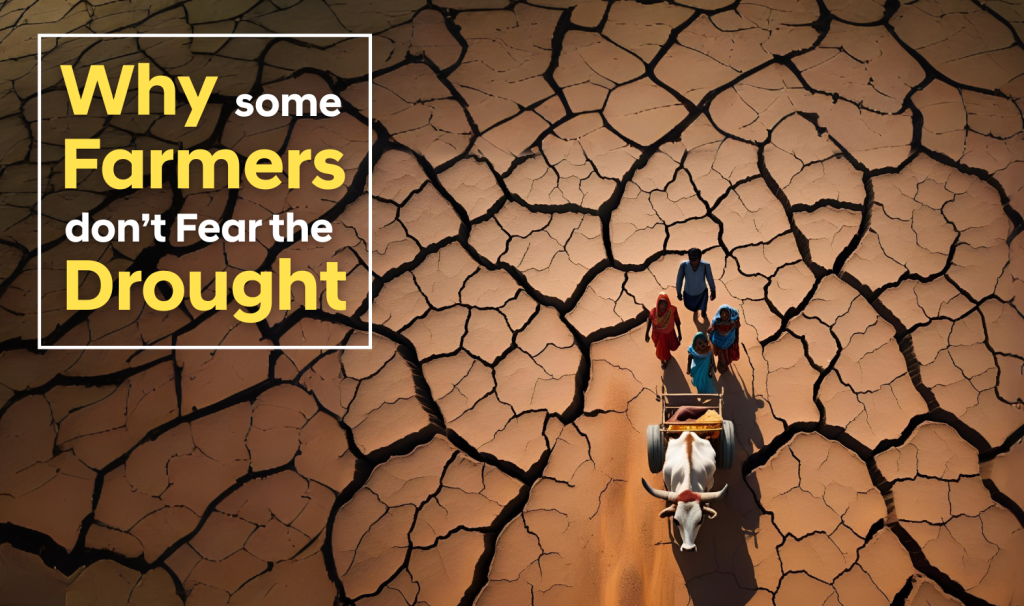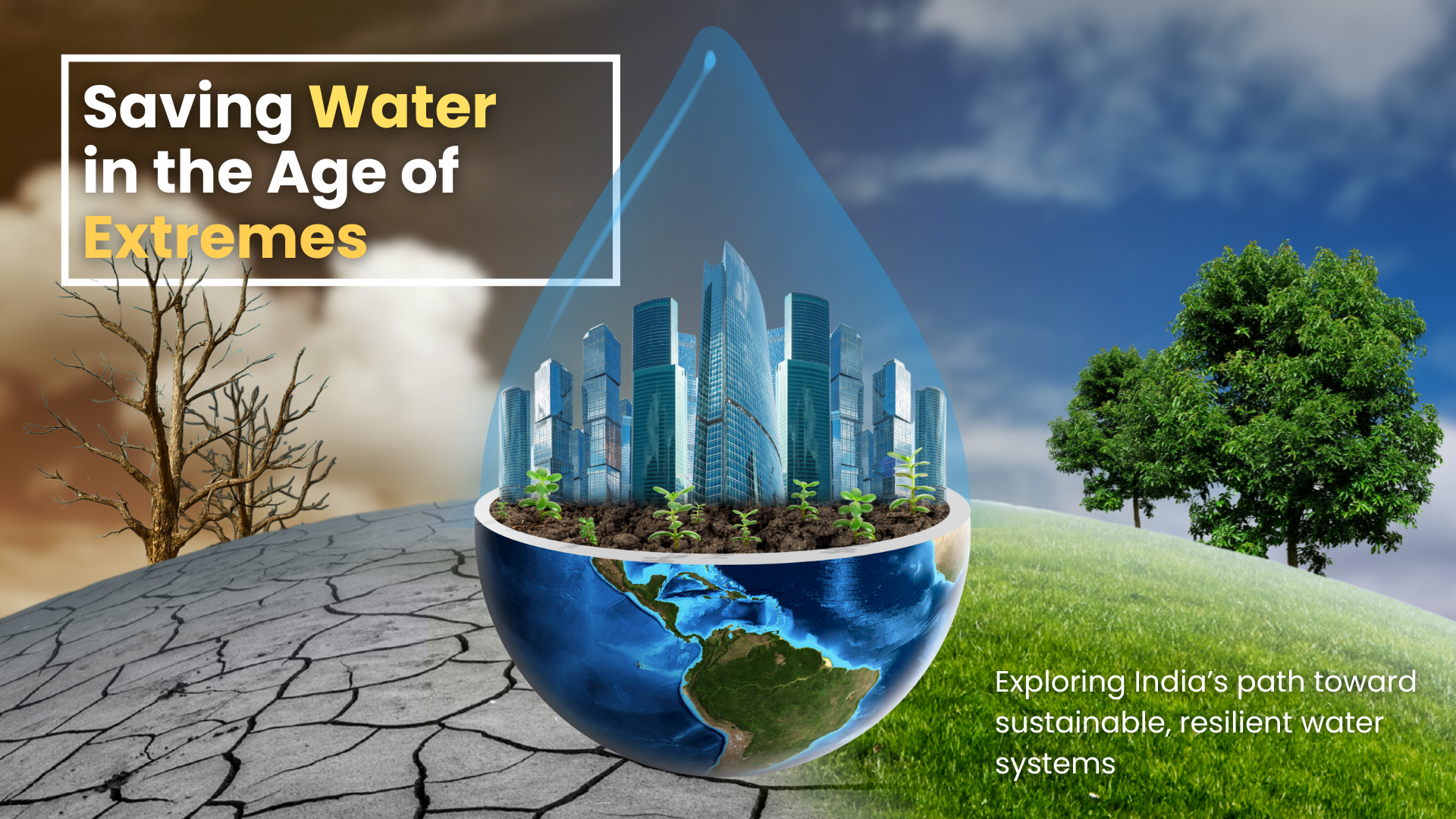
Much has been said about the impact of climate change causing extreme weather events. But we seem to have gotten used to this and accepted this as part and parcel of our lives. In short, there is a growing sense of apathy towards the dangers of climate change.
But when I say that over the last 20 years, a total of 7348 disaster events have occurred worldwide with 1.23 million fatalities and economic losses valued at 2.97 trillion US dollars, I might have your attention.
Farming, especially farming in India, is one of the professions that has taken the biggest hit due to the adversities caused by climate change. Naturally, due to improper weather, lack of crops, and lack of income, families from agricultural backgrounds are forced to migrate outwards, and they usually migrate to urban areas in search of better opportunities for life and income.
Although the effect of rainfall and temperature anomalies on migration is well documented, little is known about the impact of climate-change-induced drought on migration among rural farm households in India. Therefore, in this study, the authors Dr. Gauri Sreekumar and Prof. Sabuj Kumar Mandal from the Department of Humanities and Social Sciences, Indian Institute of Technology (IIT) Madras, Chennai, India, have investigated the impact of drought on out-migration among rural farm households in India. They also research on whether participation in non-farm activities and access to irrigation makes any difference.
Unfortunately, rural-urban migrations come with drawbacks. Although there is data to suggest that migration improves the overall well-being of families and the economy, increased rural-urban migrations lead to overpopulation at a particular region, urban poverty, violence, crime, and other societal problems. Excessive rural-urban migration also leads to decline in rural population, thus affecting agricultural production, land use, food security, etc. which in turn affect sustainable development.
But migration is not the first choice of agricultural families. Families do try to adapt to drought conditions through various strategies before reluctantly having to migrate. Personal and influential experiences with home and psychological factors also play a big role in the decision to migrate.
Therefore, in order to reduce the risk imposed by drought, families turn to non-farm activities to reduce the dependence of households’ income on crop yields. The income earned though non-farm activities has a positive impact on households. This income is used to purchase crop and livestock inputs, improve skills and production technologies, thus increasing agricultural productivity. In turn, the income helps to prepare for disasters and compensate for any income loss.
Irrigation plays an important role in out-migration for farmers. Irrigation contributes to additional water for crops ensuring food security, stabilizing agricultural productivity, and reducing cases of farmer suicide. Efficient irrigation techniques improve crop production and assist in water conservation, thereby lowering households’ susceptibility to drought and promoting sustainable agriculture methods. As a result, irrigation has emerged as an effective adaptation approach, significantly reducing the migration rates.

In this study by Gauri Sreekumar and Sabuj Kumar Mandal, Round I (2004-2005) and Round II (2011-2012) data of the India Human Development Survey (IHDS) was analysed, and the impact of drought on the migration among rural farm households was estimated using Difference-in-differences (DiD) method – a statistical technique used in economics and quantitative research to study the differential effect of a treatment group versus a control group in an experiment.
It was found that although there was evidence of drought-induced migration among rural farm households, there was no significant evidence of drought-induced migration among households engaged in non-farm business activities and those having access to irrigation, thus proving that participation in non-farm activities and access to irrigation does make a positive difference in case of drought affected rural areas.
It is suggested that the government improve the rural non-farm sector through schemes such as Aajeevika Grameen Express Yojana and Mahatma Gandhi National Rural Employment Guarantee Act. Similarly, irrigation techniques should be improved through schemes like the Pradhan Mantri Krishi Sinchayee Yojana.
Social membership too could play a significant role in reducing the number of migrants. Households’ participation in agriculture/milk/other cooperatives, non-government organisations, credit/savings group, self-help groups, and other such associations could check migration. Farmer-based organisations and better agricultural extension services could be established by the government.
Prof. Alberto Posso, Head of the Department of Accounting, Finance and Economics at Griffith University’s Business School, Brisbane, Australia, appreciated the work done by the authors and pointed out the significance of their work with the following comments: “The “Impact of drought on out-migration among rural farm households in India: does participation in non-farm activities and access to irrigation make any difference?” by Gauri Sreekumar and Sabuj Kumar Mandal makes a significant contribution to the field of climate change and migration studies. The study provides a comprehensive analysis of how drought-induced migration is influenced by non-farm activities and access to irrigation, filling a significant gap in the existing literature. The use of a large household-level panel data from the India Human Development Survey adds robustness to the study’s findings. Employing a difference-in-difference methodology, the authors present compelling evidence of drought-induced migration among rural farm households, while highlighting the mitigating effects of non-farm activities and irrigation access. The study’s implications for disaster risk reduction are particularly valuable, offering practical insights for policymakers. Overall, this article is an essential read for anyone interested in understanding the complex dynamics of climate change, agriculture, and migration in developing countries.”
Article by Akshay Anantharaman
Click here for the original link to the paper










